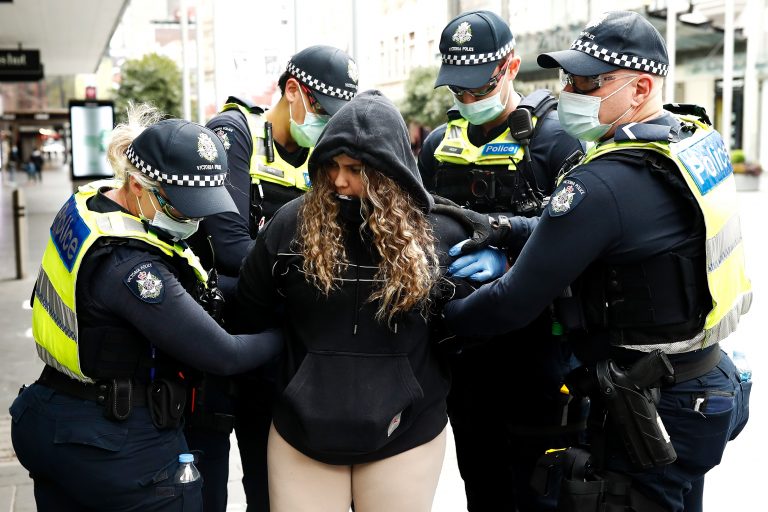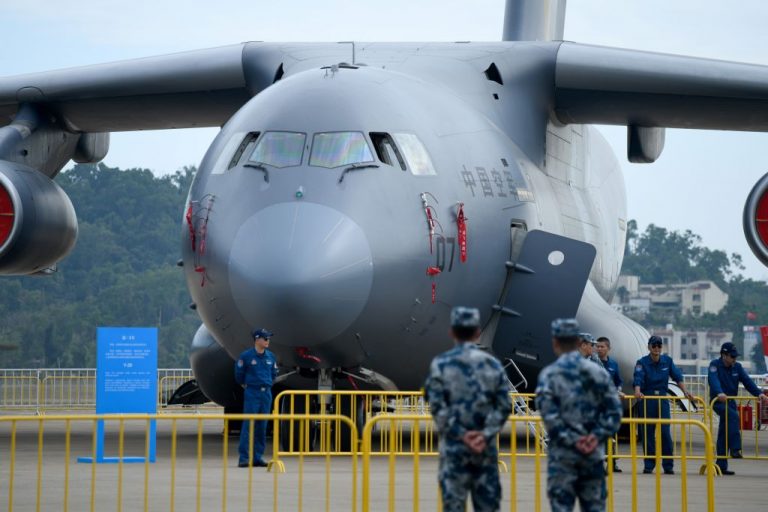Australian authorities have taken a “zero covid” approach to navigating the coronavirus pandemic and have implemented strict lockdown control measures in the name of public health while facing accusations that the political class has been largely insulated from the consequences.
Australia, post COVID-19, looks much different than what it did prior to the pandemic.
Australia today looks more like an authoritarian state than it does a free country.
Victoria and New South Wales — Australia’s two largest states — make up approximately 60 percent of Australia’s population and these states have been in lockdown for some time. Melbourne, Australia’s second-largest city, has been locked down for months.
Citizens have to contend with a strict curfew between 9 p.m. and 5 a.m., are not allowed to travel more than three miles from their homes, and can be fined up to US$15,000 for contravening the public health orders. There does not appear to be any shortage of police officers willing to enforce the health orders and hand out fines.
Success
You are now signed up for our newsletter
Success
Check your email to complete sign up
Freedom of movement throughout the country — a cornerstone of a free and open democracy — has been all but extinguished. Each state government has imposed convoluted entry requirements for interstate travellers and borders between states are often closed all together.
Entry requirements are at times so strict that returning residents cannot even get into their own state. This particular problem has been emerging along the borders between Victoria and New South Wales. The issue has gotten so bad that Australia now has a class of internally displaced people.
Quarantine camps
One of the more startling developments on the continent are the construction and use of quarantine camps or the practice of “mandatory supervised quarantine.”
Travelers, whether they hail from Australia or somewhere else, must quarantine, at their own expense, for 14 days upon arriving in the country. While many western democracies have implemented similar stop gaps in an attempt to limit the spread of the virus Australian authorities have taken the concept to an extreme.
Per the Government of Australia’s website, “Individuals entering into mandatory supervised quarantine in the Northern Territory will be charged a rate of $2,500 per person or $5,000 for a family of two or more people for 14 days.”
Any person found breaching the quarantine regulations is liable to be fined.
In Australia’s Northern Territory, authorities have resurrected a former mining camp that they now describe as “a stylish, innovative and sustainable accommodation village.”
Currently, there are two mandatory supervised quarantine facilities in the Northern Territory; the Centre for National Resilience in Howard Springs, Darwin and the Alice Springs Quarantine Facility in Alice Springs.
Authorities warn travellers that the intake process could take several hours and are handed a rule book outlining the expectations on behavior by ‘residents.’ People under quarantine are told that the regulations they must follow are “law” enacted by the Chief Health Officer and if broken will be punishable by fines.
People, whether they are infected with COVID-19 or not, are not allowed to leave their allocated room, including any veranda space that is allocated. Social distancing is enforced as well as mask wearing whether the person is indoors or out. Persons under quarantine must “comply with any directions given by an authorized officer to avoid people congregating in a quarantine zone.”
Persons are also subjected to two mandatory testings per stay via nose and throat swabs and, if one refuses the tests, they are subjected to a further 10-days of incarceration at the person’s expense.
Three meals a day are provided as there are no cooking facilities in any rooms. They are delivered by staff in full protective equipment and left outside a person’s room.
The camps are not entirely constructed as of yet with some slated to be complete in 2022 while others as far out as 2024 indicating that Australian authorities intend on utilizing the camps not just for weeks, or months to come, but for years.
Protests erupt
Regular citizens are not taking the restrictions sitting down but are flooding the streets protesting what their country has become.
Australian police arrested 235 people in Melbourne and 32 in Sydney on Sept. 18 following “unsanctioned” anti-lockdown rallies where several police officers were injured in clashes with protesters, Reuters reported.
In Sydney, hundreds of people managed to gather which prompted authorities to suspend all public transportation in the city.
Riot squads, highway patrol, detectives and general duties police were deployed to the streets in an attempt to prevent the large gatherings.
The protesters are being widely characterized as “anti-vaccine” protesters however the scale and scope of the protests appear to include Australians from every persuasion and opinion.
No end in sight
Authorities have said that restrictions will ease once 70 percent of the population is fully vaccinated. As of Sept. 29, 77.3 percent of people aged 16 and over have received a first dose of vaccine and 53.4 percent of people aged 16 and above have received a second dose. There is still significant progress needed in order to ease restrictions and it is contingent on many Australians being willing to submit themselves to a vaccination regimen.
The vaccines however do not appear to be having the effect that authorities want or hope for.
On Sept. 29, authorities reported that of the seven people who had died due to COVID-19 on Sept. 28, six of them were fully or partially vaccinated.
More sobering are the words uttered by a Chief Health Officer on Sept. 25.
“We will not be ever having to go back to pre-COVID levels. We will always going to have to be mindful that COVID exists. We are going to have to engage with booster shots, we are going to have to engage with advice from time to time, when we see outbreaks, We are going to have to respond. It’s not going to go back to normal. We can’t deny that we are going to have to live with COVID.”
The country, with a population of approximately 25.7 million people, has recorded a total of 102,729 cases of the virus and 1,278 people have died.







